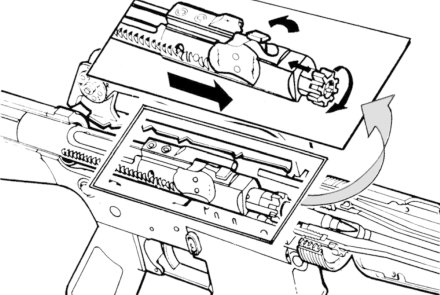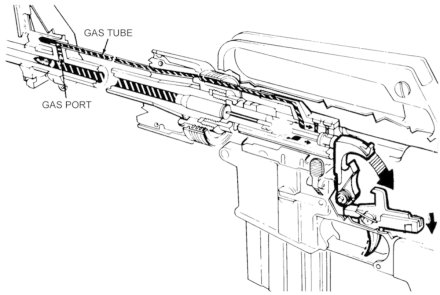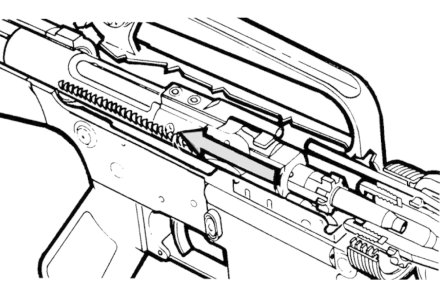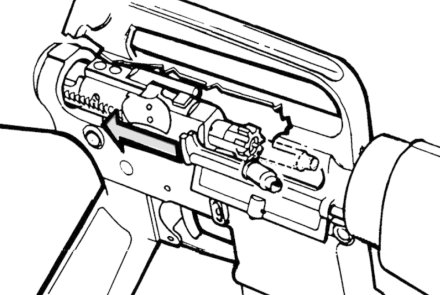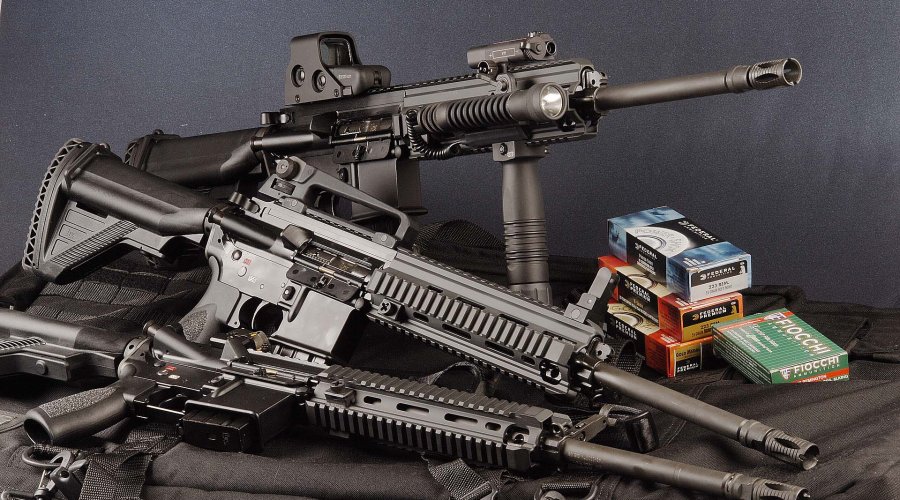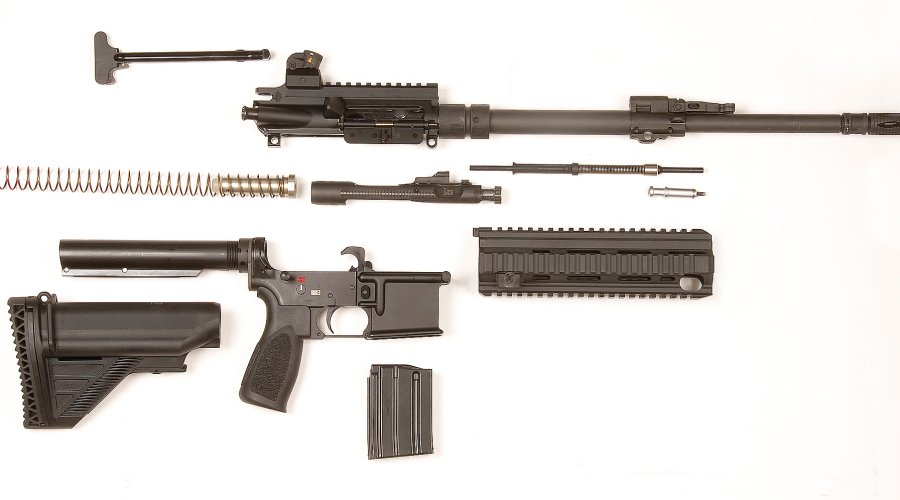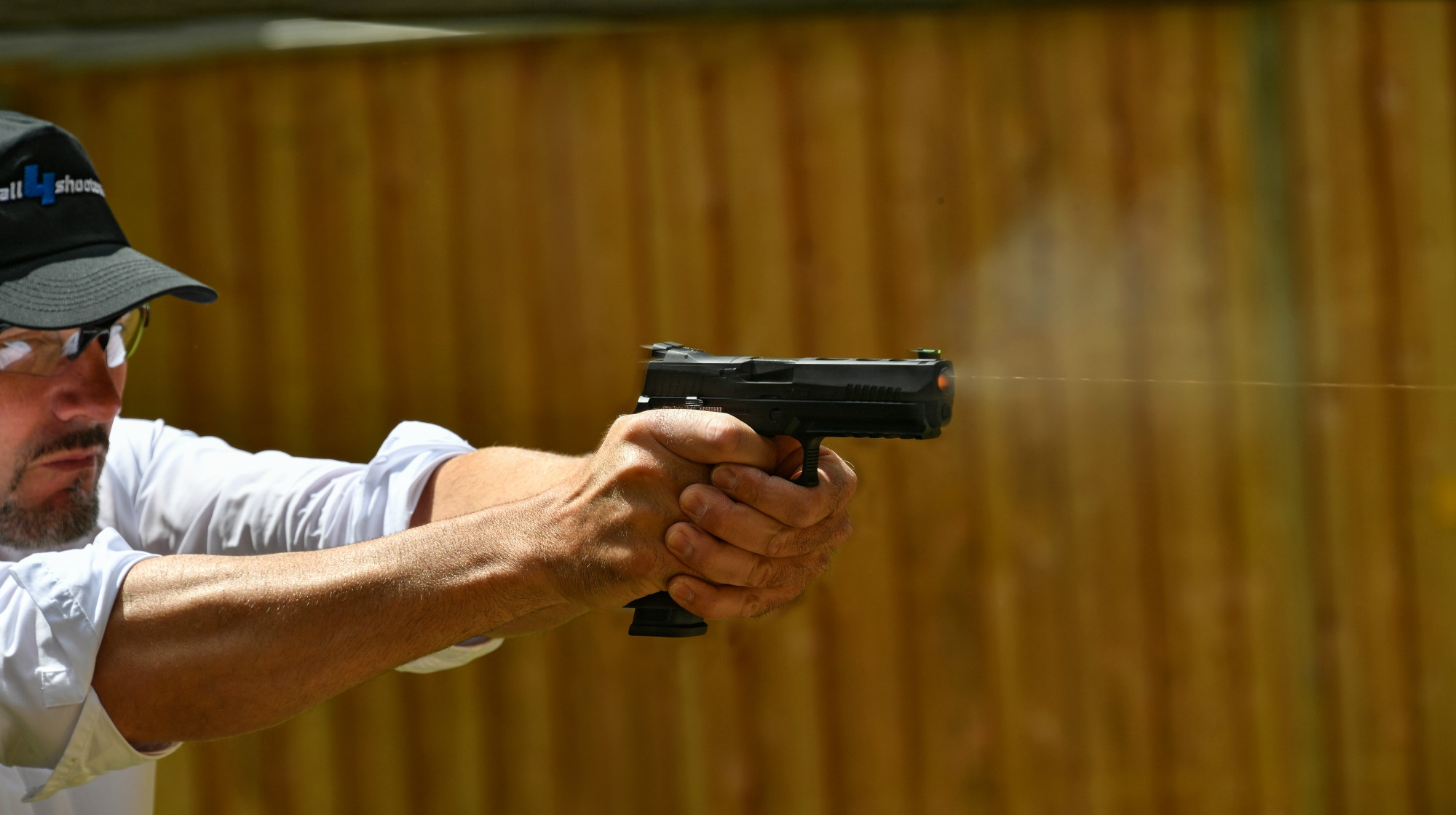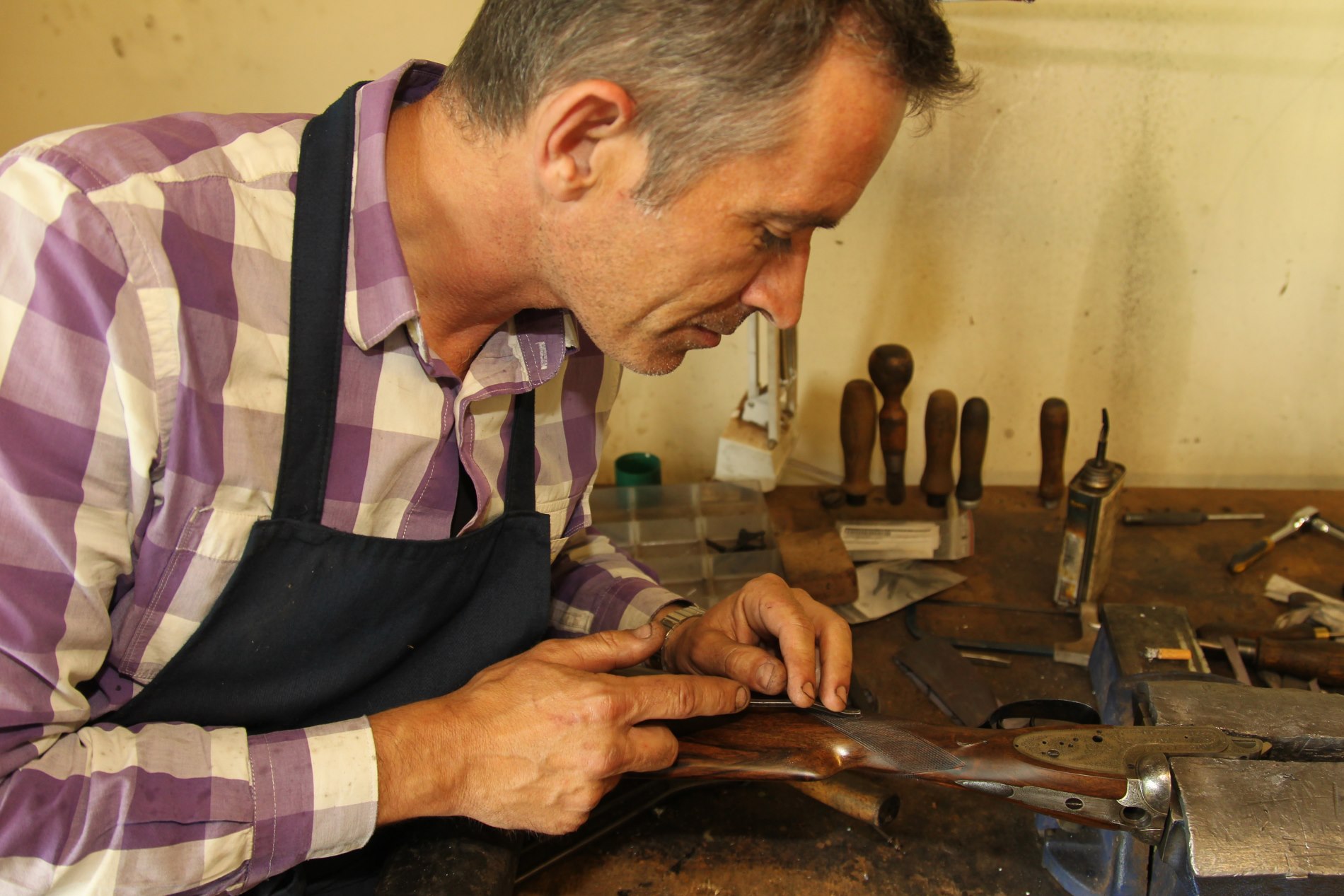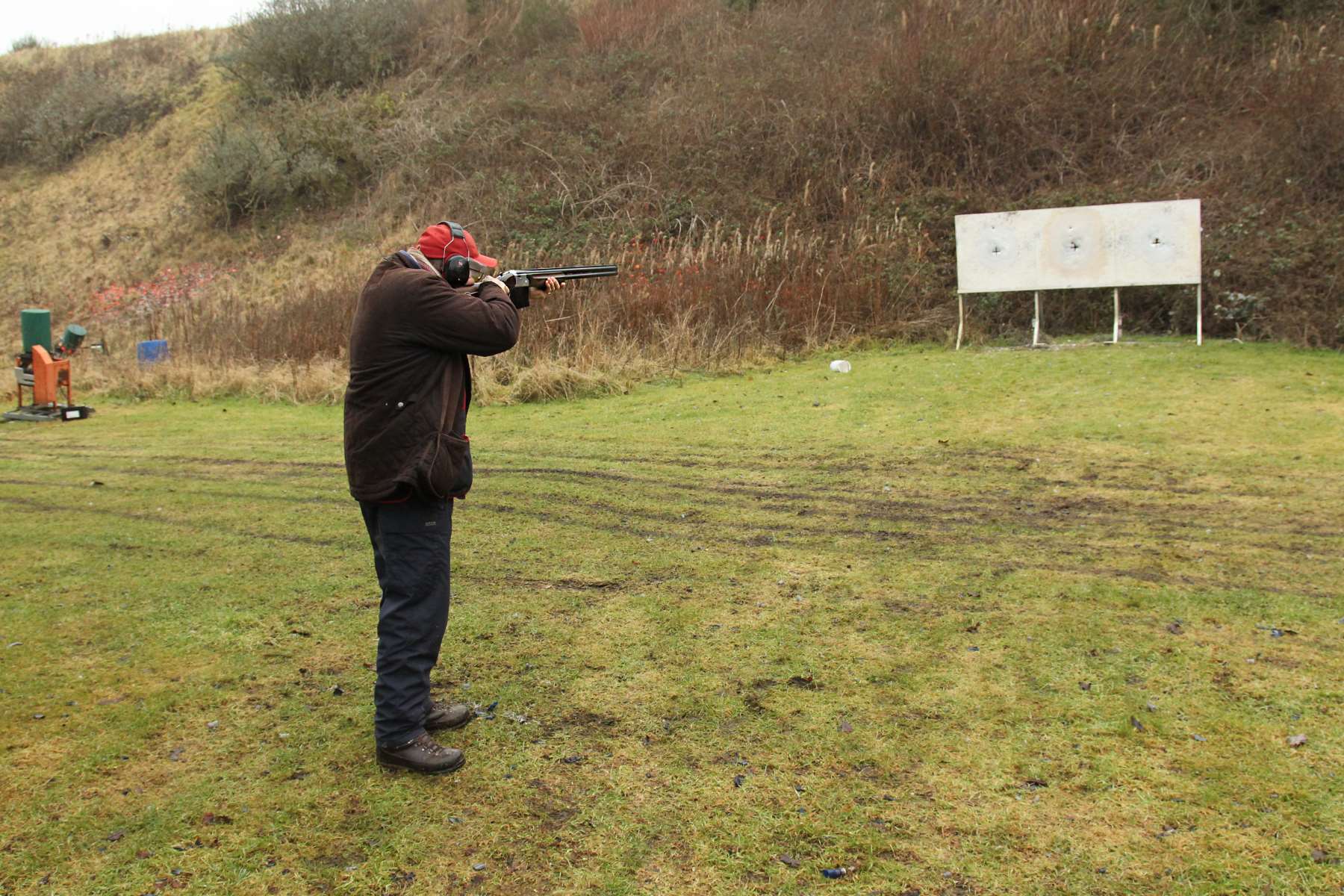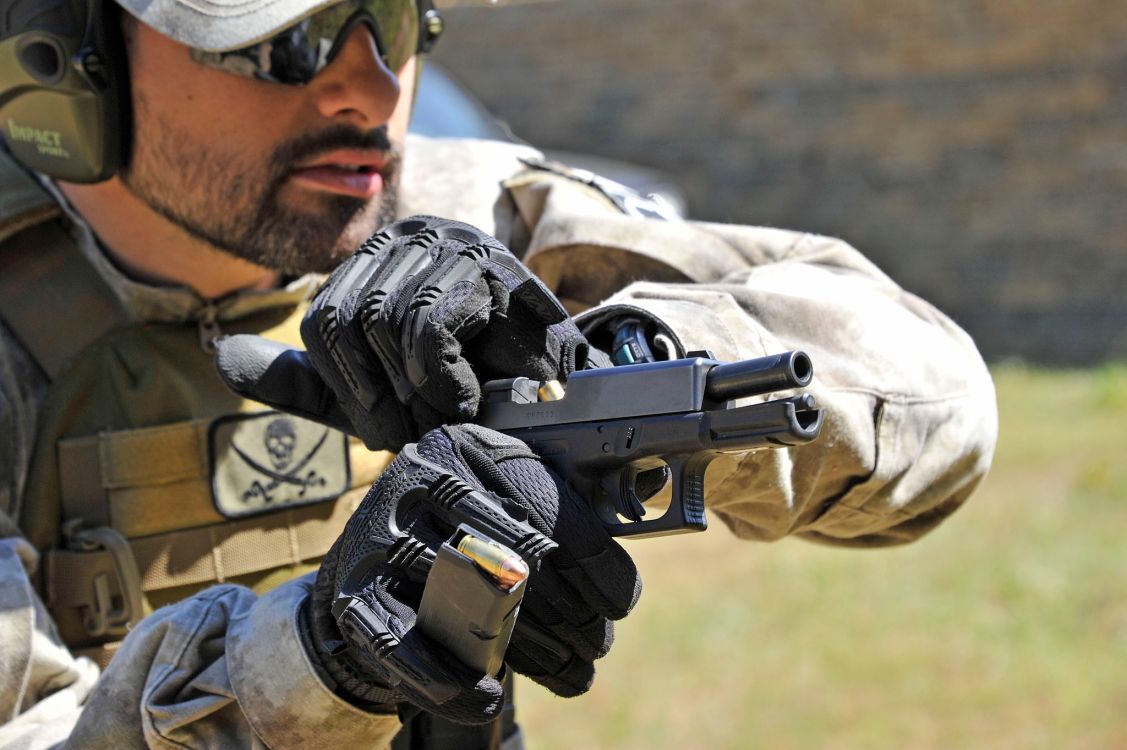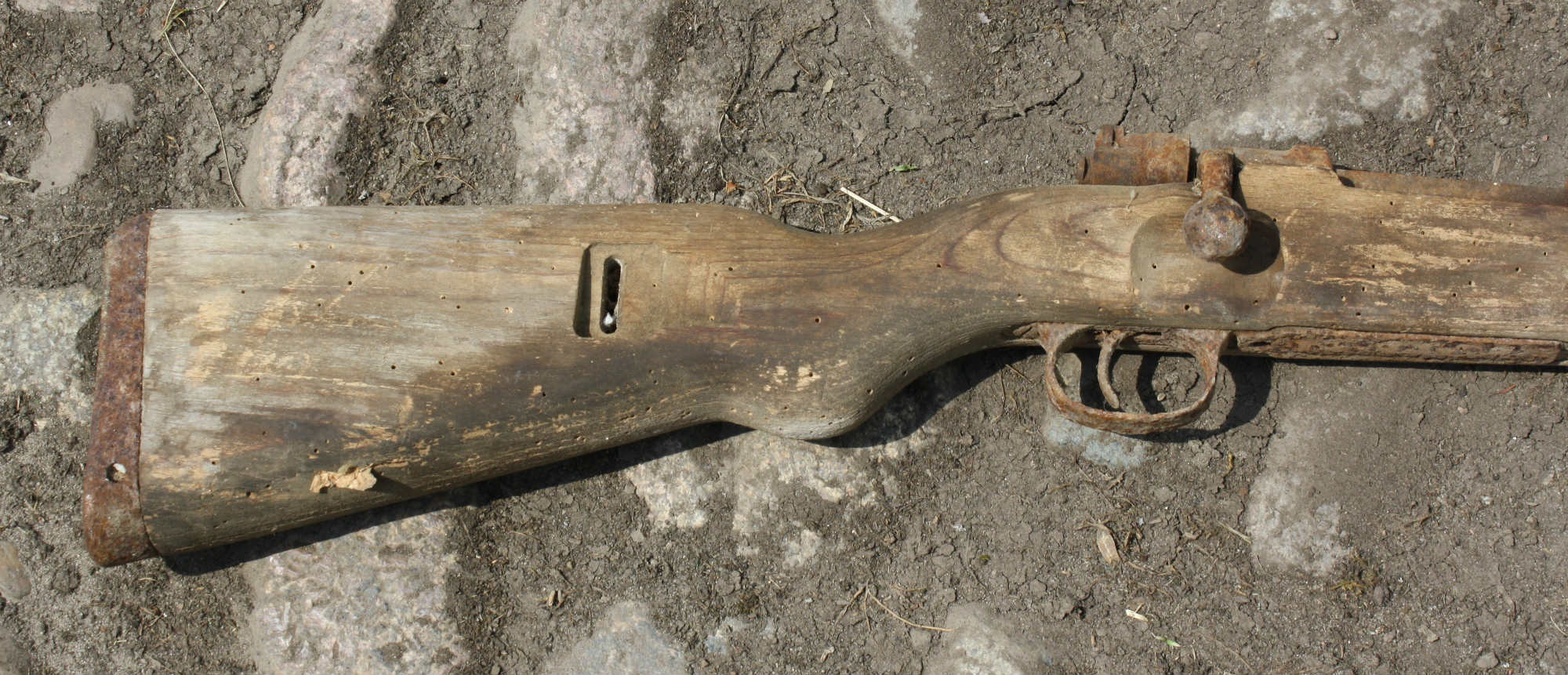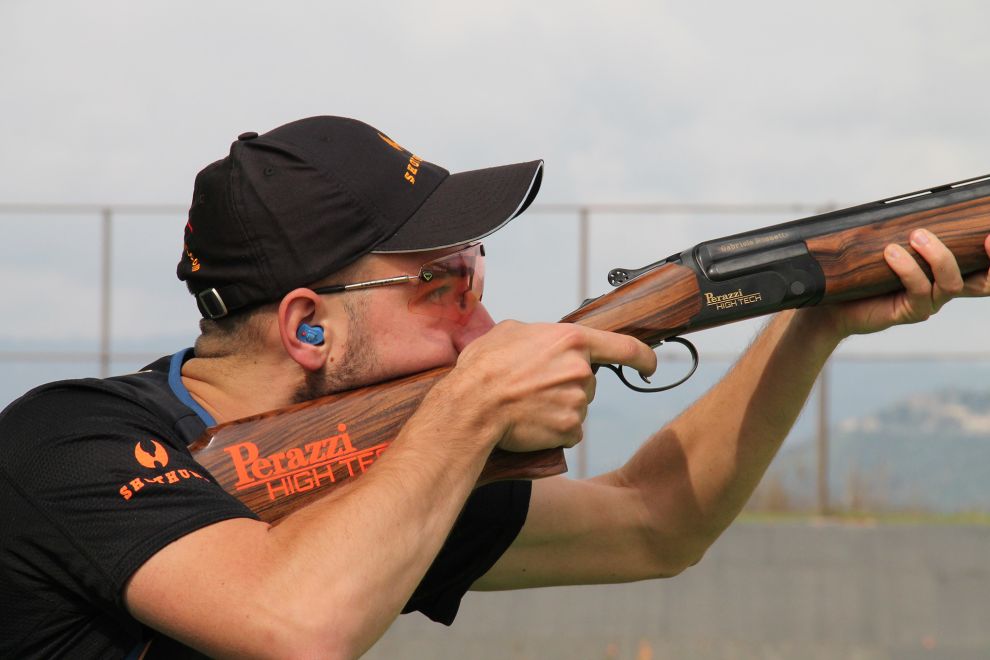When Eugene Stoner designed the AR-15, he was obsessed with the in-line concept: everything had to happen on the same axis, which went from muzzle to stock. It wasn’t just on a mere whim: the purpose of this arrangement was to minimize any shaking and any force acting on the weapon which didn’t go straight back against the shoulder of the shooter, to avoid disturbing the point of aim and allow for fast follow-up shots.
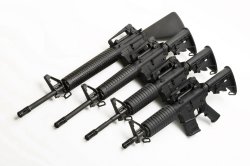
Most semiautomatic weapons have a lot of moving parts, which run above, or under the barrel of the gun, which in turn is usually on a different axis than the stock.
Each time a force acts on a line different from the axis that passes from the contact point on the shooter’s shoulder, it creates a rotating force that will move the muzzle away from its intended aiming point. In the AR-15 all forces are applied on the same axis and are directed either straight forward or straight back.
How the AR-15 works
To make this possible, Stoner devised a system where a small part of the hot gases which propel the bullet is diverted from the barrel and brought directly to the Bolt Carrier Group (BCG) without intervening mechanisms.
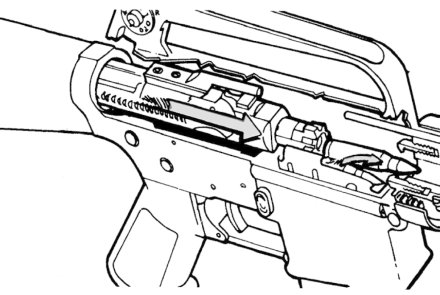
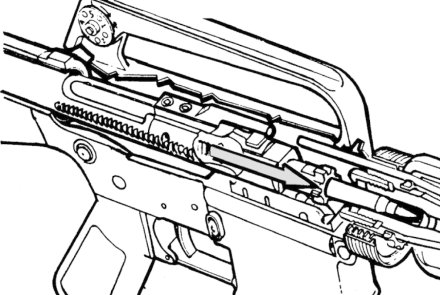
The AR-15 fires from a locked bolt, meaning that when a cartridge is chambered, the bolt closes behind the case and rotates 15 degrees: the lugs on the bolt head engage the protrusions on the barrel extension, solidly locking the bolt in place, so it can withstand the high pressure produced by powder combustion.
When the cartridge is fired, the bolt needs to rotate in the opposite direction and pulled back, so that the spent case can be extracted, ejected and a fresh round can be chambered.
As soon as the bullet passes the gas port in the barrel, part of the hot gases start to flow into the gas tube towards the BCG. Here they enter the expansion chamber through the bolt carrier key and start to exert pressure on all of the surfaces in the expansion chamber, whose forward surface is the piston in the bolt tail, with its three C rings.
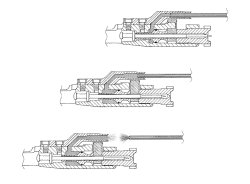
These are not different from the gas seals on the pistons in the engine of your car. As in a car engine, the gases push on this piston, only in this case it’s the cylinder that moves from a stationary piston: the bolt carrier is therefore pushed back.
Two things happen: first, the rearward travel of the bolt carrier makes the two holes drilled on its side pass by the sealing C rings placed on the tail of the bolt, venting the hot gases.
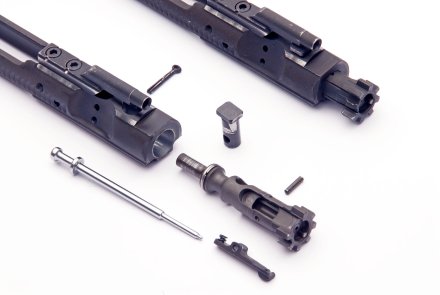
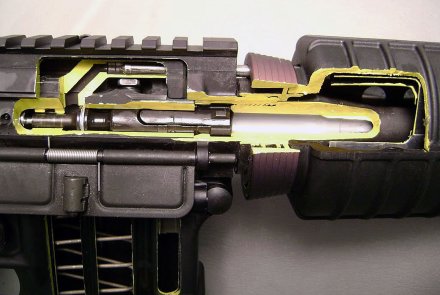
Second, the bolt carrier continues to move backwards due to inertia, and the cam slot milled into its top side acts on the bolt lug, forcing the bolt to rotate into its unlocked position. By this time the bullet has left the barrel for good and pressure has dropped to safe levels. As the bolt carrier continues its rearward movement due to inertia, the bolt is pulled back from the breech, the spent case extracted and ejected. The recoil spring, which has been compressed by the BCG, pushes the bolt carrier forward again, stripping a fresh cartridge from the magazine, chambering it and, through interaction of the cam slot and bolt lug, the bolt is rotated into locked position again.
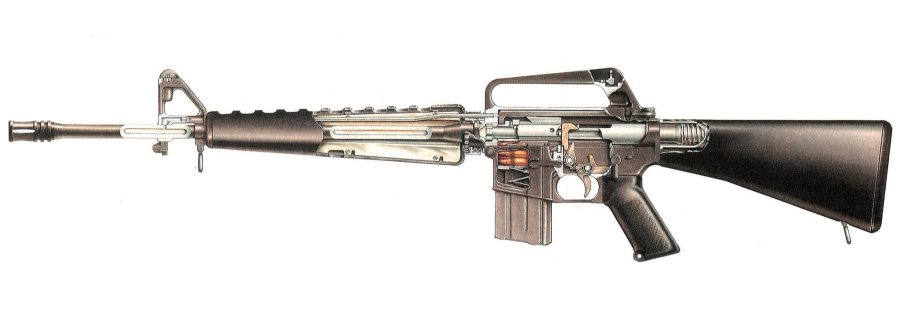
This arrangement allows not only in-axis action, but also moving parts that possess a low mass, keeping shaking to a minimum.
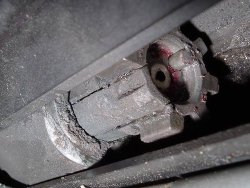
It has its drawbacks, though, the main one being that, as it’s been saucily put by many servicemen, “it shits where it eats”: even if most of the gases from powder combustion are exhausted outside the rifle, before venting out of the BCG they all pass directly into the gun action, where dirt can clog things up and cause jams.
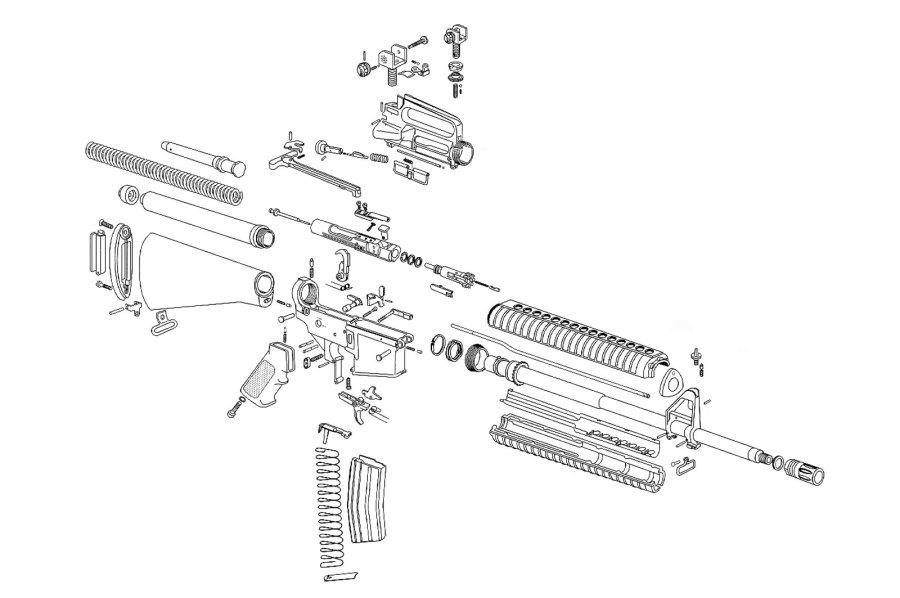
The Piston operated AR-15
Recently a new breed of AR-15 came to rise: piston operated rifles. A short stroke piston replaces the gas tube, and operates against a bolt carrier appendix much similar to the gas key.
Original AR-15 are deemed “direct gas impingement”, while the new ones are deemed “piston operated”. Actually, the old mechanism is not a direct gas impingement mechanism. In a direct gas impingement system (such as the Ljungman Ag m/42) the gases act directly against the bolt carrier, whereas, as we said, here they act into a chamber with a piston.
Truth is, all AR-15 are “piston operated”, the difference being only where the piston is placed.
We’ll see the details of the piston gas system (and its own drawbacks) in a forthcoming article.



